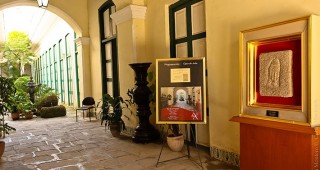Created by, and housed in the headquarters of, the Asociación Cultural Yoruba de Cuba, this museum is dedicated to santería and features sculptures representing the different Afro-Cuban orishas (saint-gods) and is the first of its kind in the world. Although its collection consists mostly of African-style representations, some of the orishas have been set in Cuban sceneries.
Given that Museo de los Orishas is a bona fide NGO, it depends on its own income and charges more than state-run museums.
Admission details: CUC 10, groups of 5 or more, CUC 6; students CUC 3; free under-12s
Admission details: CUC 10, groups of 5 or more, CUC 6; students CUC 3; free under-12s




 Modern
Modern








